Law & Politics
What’s Behind the Court-Mandated Sale of Artworks by Michael Jackson?
The artworks have been stored in a vault amid ongoing litigation since 2021.
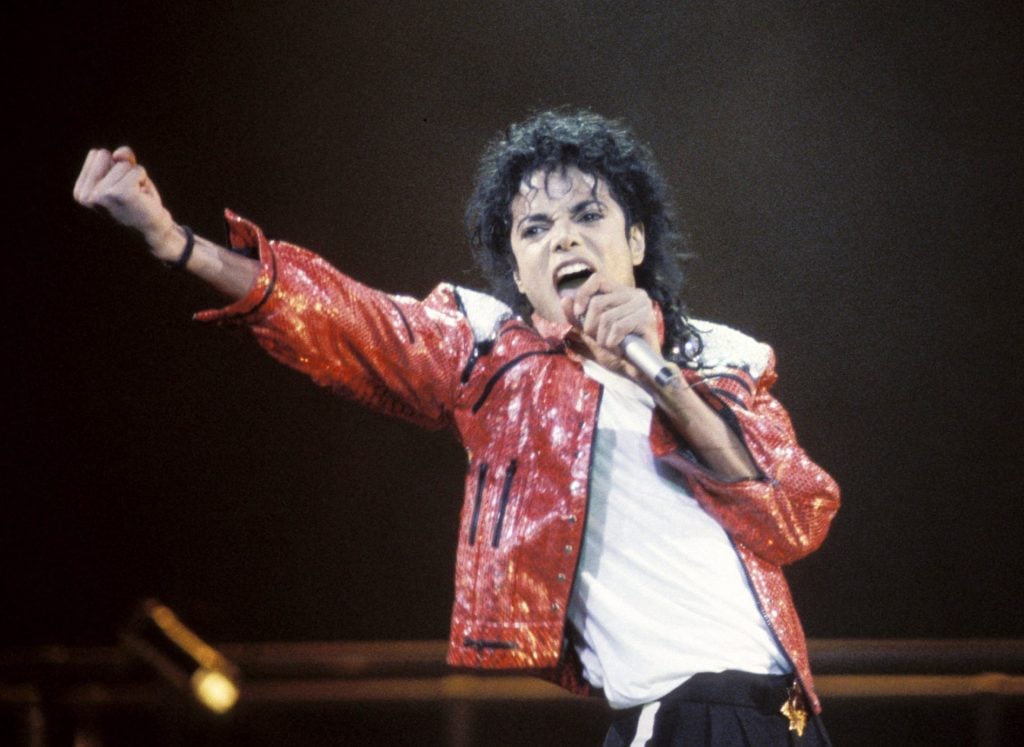
The artworks have been stored in a vault amid ongoing litigation since 2021.

Adam Schrader

A cache of 76 artworks created by the late pop star Michael Jackson is headed to a court-mandated sale in Las Vegas. The auction is but the latest chapter for a collection that’s been at the center of years-long legal entanglement.
The August 3 sale at King’s Auction features Jackson’s watercolor and colored pencil drawings of subjects from Andy Warhol to Queen Elizabeth to various U.S. presidents, completed in the 1990s. Also included is a self-portrait at the entrance to the Neverland Royal Theater.
Some works are drawn on presidential paper that Jackson received during a White House visit upon an invitation by President Ronald Reagan in 1984 after he allowed his song “Beat It” to be used in a public service announcement.
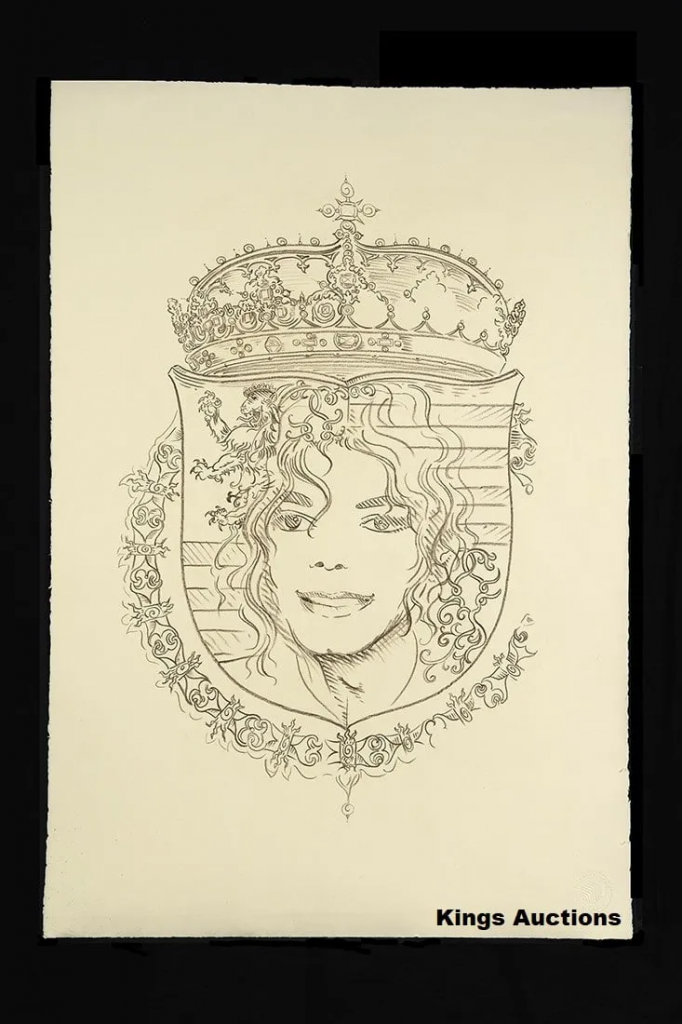
Michael Jackson, Neverland Royal Theater Entrance – Self Portrait (1993). Photo courtesy of King’s Auctions.
“A few of Michael’s pieces are done with watercolors and tell a story of tranquility,” the auction house said in a statement, calling the sale a “rare, once-in-a-lifetime event to acquire an amazing piece of Michael Jackson’s art memorabilia.”
Uniquely, the auction’s first lot contains all the items in the collection. The auctioneer is seeking to sell the trove in one fell swoop for $1 million, what it called “a fair price.” If that amount cannot be reached, the works would be sold separately, each with a starting bid of $9,999.
The auction listing clarifies: “This auction is not affiliated with or endorsed by the Jackson Estate. This auction is court mandated by the Santa Monica Court.”

Michael Jackson, Vincent’s Flowers (1997–98). Photo courtesy of King’s Auctions.
The sale has been compelled by the Superior Court of California amid litigation between investment group Vinson Investments and the Jackson-Strong Alliance, the art business partnership between the King of Pop and Australian sculptor Brett-Livingstone Strong.
Jackson and Strong were first acquainted in 1979 and embarked on a loose collaborative friendship that lasted until the pop icon’s death in 2009. During their partnership, Strong reportedly encouraged Jackson in his art, while Jackson commissioned the artist to paint his portrait in 1990. (The resulting work—the only portrait that the musician ever sat for—was sold to Japanese firm Hiromichi Saeki Corp. for more than $2 million; following Jackson’s death, the painting curiously re-emerged in a car showroom in Harlem.)
Strong claims that Jackson assigned him the copyrights to his artworks in early 2009; the artist was reportedly also advised of such by Tohme Tohme, Jackson’s final business manager. In 2011, according to a report in Star, Strong sold the 182-piece collection to an undisclosed buyer for $87.7 million without the knowledge of the Jackson estate. Lawyers for the singer’s family attempted to block the sale, the publication reported, and it appears to not have gone ahead.
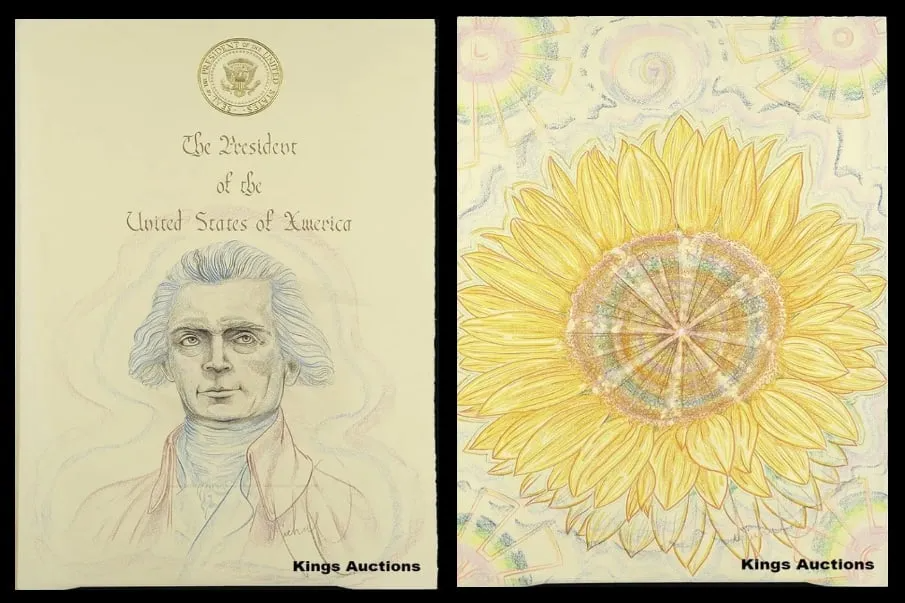
Two front-and-back works by Michael Jackson, titled Sunflower (1998) and President Jefferson (1994). Photo courtesy of King’s Auctions.
The latest developments stem from a dispute over a loan Strong acquired from Vinson Investments, which required the transfer of the Jackson artworks to the firm, the artist charged in court documents obtained by Artnet News. He accused Vinson Investments of usury, the practice of lending money at unreasonably high interest rates.
The parties reached a settlement agreement in May 2023 but a sale or auction of the works did not yet occur, even after Vinson Investments filed a number of court documents attempting to force the auction; it also asked for Strong be held in contempt. The sale appears to have been compelled now because Strong owes hundreds of thousands of dollars in debt to creditors who have requested that the auction proceeds be used to settle his accounts.
Strong’s lawyers did not respond to requests for comment.
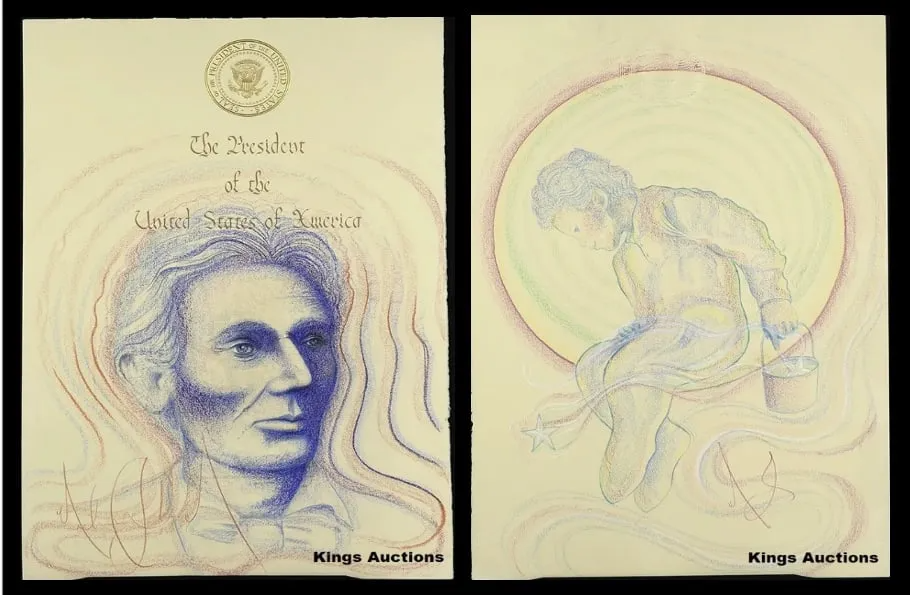
Two front-and-back works by Michael Jackson, titled Lincoln in Blue (1993) and Peter Pan’s Stars II (1993). Photo courtesy of King’s Auctions.
Court documents also reveal that Strong had sought to land the auction with Sotheby’s, Christie’s, or Guernsey’s, before King’s Auctions was chosen by Vinson Investments as its preferred auction house for the sale. It was not clear from the court documents why the larger auction houses were not tapped for the sale.
However, in January, Strong allegedly refused to allow King’s Auctions to take possession of the works. In a declaration made before Judge Mark Epstein, Catherine King, the head of the auction house, said her team was only able to access the collection in April and could only take a partial inventory.
The auction house was later able to inspect the trove and conduct proper inventories, but King’s testimony attests to the challenges the court faced in ending the litigation over Jackson’s artworks.
“As is shown, some of the artwork represented to be originals were, in fact, copies. Those are noted on the inventory list, and cannot be auctioned in this auction,” King confirmed in her declaration. A provided inventory shows that those copies included a self-portrait, and portraits of Abraham Lincoln, George H.W. Bush, and George Washington, among others.
A representative for King’s Auctions said by email that the auction house picked up the pieces from a jointly owned art vault in Santa Monica, to which the works had been moved after a November 2023 court mandate. King’s flew in music expert Roger Epperson from Houston to authenticate the works.
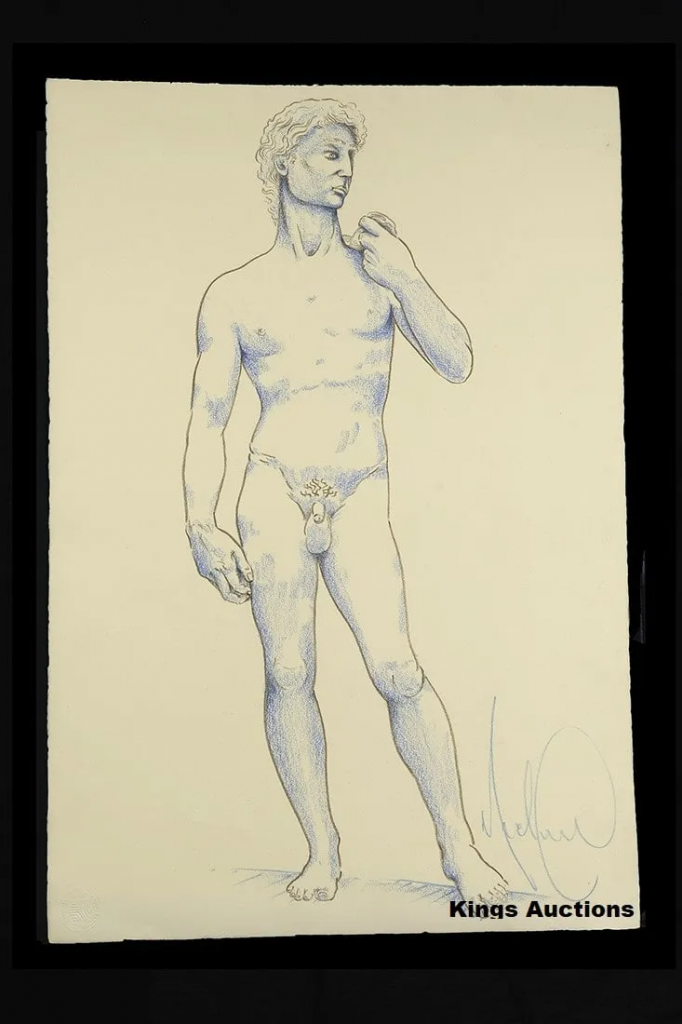
Michael Jackson, Michael’s Statue of David, after Michelangelo (1994–95). Photo courtesy of King’s Auctions.
While Epperson has certified the pieces as original works and authenticated Jackson’s signature, the singer’s estate reportedly remains skeptical of the authenticity of the collection.
A representative for the estate told TMZ that it does not accept the drawings as authentic. The estate claimed it had examined the artwork years ago, and upon further inspection, had further doubts, which were allegedly relayed to the auction house. John Branca, the co-executor of Jackson’s estate, did not respond to a request for comment.
Strong’s lawyers have also asserted that the “unstructured sale of artwork” by Vinson Investments could “negatively impact the value realized” for the artwork, which would harm not only JSA, but other creditors of JSA. “The court should order that the paintings be sold in compliance with the agreement of the parties,” his lawyers said.
King and Vinson Investments contend that past sales of Jackson’s artwork “vary considerably.” The auction house previously estimated the total value of the collection to be about $5 million, though Strong previously suggested each artwork could be worth as much as $7 million.
“It is time for the works to be sold and the case to end,” Judge Mark Epstein wrote in his order. “The court simply lacks confidence in any promises that there is a better deal actually to be had.”